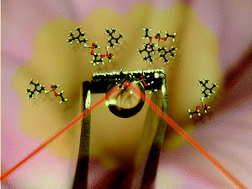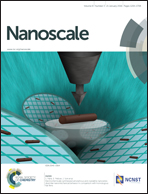Detection of nerve gases using surface-enhanced Raman scattering substrates with high droplet adhesion†
Abstract
Threats from chemical warfare agents, commonly known as nerve gases, constitute a serious security issue of increasing global concern because of surging terrorist activity worldwide. However, nerve gases are difficult to detect using current analytical tools and outside dedicated laboratories. Here we demonstrate that surface-enhanced Raman scattering (SERS) can be used for sensitive detection of femtomol quantities of two nerve gases, VX and Tabun, using a handheld Raman device and SERS substrates consisting of flexible gold-covered Si nanopillars. The substrate surface exhibits high droplet adhesion and nanopillar clustering due to elasto-capillary forces, resulting in enrichment of target molecules in plasmonic hot-spots with high Raman enhancement. The results may pave the way for strategic life-saving SERS detection of chemical warfare agents in the field.


 Please wait while we load your content...
Please wait while we load your content...